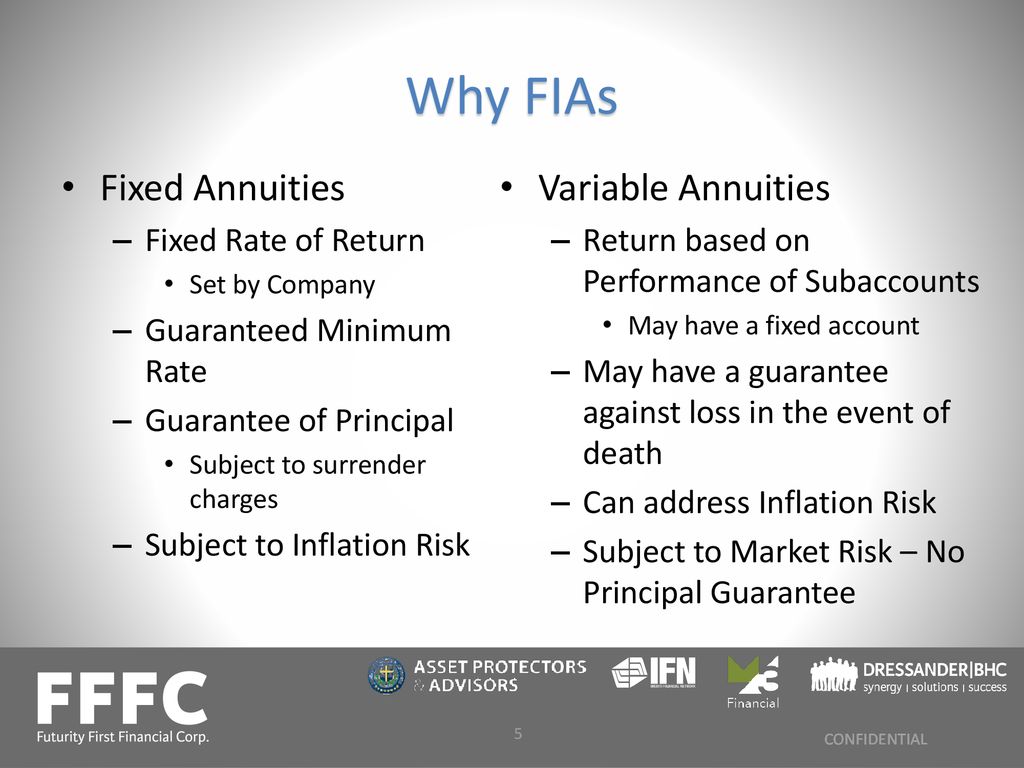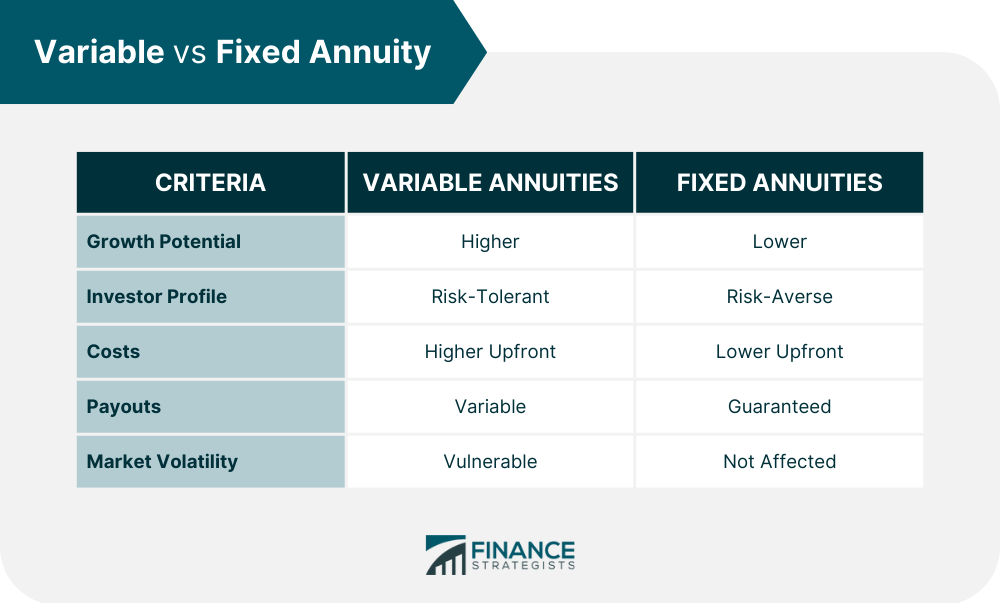All Categories
Featured
Table of Contents
The repayment could be spent for growth for an extended period of timea single premium deferred annuityor spent for a brief time, after which payment beginsa solitary premium immediate annuity. Solitary costs annuities are typically moneyed by rollovers or from the sale of a valued possession. An adaptable costs annuity is an annuity that is meant to be moneyed by a series of payments.
Proprietors of fixed annuities recognize at the time of their acquisition what the worth of the future cash circulations will certainly be that are produced by the annuity. Clearly, the variety of cash flows can not be known ahead of time (as this depends upon the contract owner's life expectancy), yet the assured, dealt with rates of interest a minimum of provides the owner some degree of certainty of future income from the annuity.
While this distinction appears simple and simple, it can dramatically impact the worth that an agreement owner inevitably derives from his or her annuity, and it creates significant unpredictability for the agreement owner - Fixed annuity pros and cons. It additionally usually has a material influence on the degree of fees that a contract owner pays to the releasing insurer
Set annuities are often made use of by older financiers who have restricted properties yet that intend to offset the threat of outlasting their properties. Set annuities can work as an effective device for this function, though not without certain disadvantages. As an example, in the instance of immediate annuities, as soon as an agreement has been acquired, the contract owner gives up any type of and all control over the annuity properties.
Decoding How Investment Plans Work Key Insights on Your Financial Future Breaking Down the Basics of Fixed Annuity Or Variable Annuity Benefits of Choosing the Right Financial Plan Why What Is A Variable Annuity Vs A Fixed Annuity Is Worth Considering How to Compare Different Investment Plans: Simplified Key Differences Between Different Financial Strategies Understanding the Risks of Long-Term Investments Who Should Consider Strategic Financial Planning? Tips for Choosing Fixed Vs Variable Annuity Pros And Cons FAQs About Planning Your Financial Future Common Mistakes to Avoid When Planning Your Retirement Financial Planning Simplified: Understanding Variable Vs Fixed Annuity A Beginner’s Guide to Smart Investment Decisions A Closer Look at How to Build a Retirement Plan
A contract with a regular 10-year surrender period would certainly bill a 10% abandonment fee if the agreement was given up in the initial year, a 9% abandonment cost in the second year, and so on till the surrender fee gets to 0% in the agreement's 11th year. Some postponed annuity agreements have language that enables small withdrawals to be made at numerous periods throughout the abandonment duration scot-free, though these allowances usually come with a cost in the kind of lower guaranteed rate of interest.
Equally as with a fixed annuity, the owner of a variable annuity pays an insurance provider a round figure or series of repayments for the promise of a series of future settlements in return. Yet as mentioned above, while a taken care of annuity grows at an assured, constant price, a variable annuity grows at a variable price that relies on the efficiency of the underlying investments, called sub-accounts.
During the build-up phase, properties bought variable annuity sub-accounts grow on a tax-deferred basis and are exhausted just when the agreement proprietor withdraws those earnings from the account. After the accumulation phase comes the earnings stage. Over time, variable annuity properties ought to in theory increase in value until the contract proprietor determines she or he would love to begin taking out cash from the account.
The most substantial issue that variable annuities normally existing is high expense. Variable annuities have several layers of charges and expenses that can, in aggregate, produce a drag of as much as 3-4% of the contract's value yearly. Below are one of the most typical costs linked with variable annuities. This cost compensates the insurance company for the threat that it thinks under the terms of the agreement.
M&E expense costs are determined as a percent of the contract worth Annuity companies hand down recordkeeping and other management costs to the contract owner. This can be in the type of a flat annual fee or a percent of the contract value. Administrative costs might be included as part of the M&E threat fee or might be analyzed individually.
These fees can vary from 0.1% for easy funds to 1.5% or more for proactively taken care of funds. Annuity agreements can be personalized in a variety of methods to serve the certain needs of the contract owner. Some typical variable annuity motorcyclists include ensured minimal build-up advantage (GMAB), ensured minimum withdrawal benefit (GMWB), and assured minimum earnings benefit (GMIB).
Breaking Down Fixed Vs Variable Annuity A Comprehensive Guide to Investment Choices What Is What Is A Variable Annuity Vs A Fixed Annuity? Pros and Cons of What Is A Variable Annuity Vs A Fixed Annuity Why Choosing the Right Financial Strategy Is a Smart Choice How to Compare Different Investment Plans: Simplified Key Differences Between Annuity Fixed Vs Variable Understanding the Key Features of Long-Term Investments Who Should Consider Strategic Financial Planning? Tips for Choosing Fixed Annuity Vs Equity-linked Variable Annuity FAQs About Retirement Income Fixed Vs Variable Annuity Common Mistakes to Avoid When Choosing a Financial Strategy Financial Planning Simplified: Understanding Annuities Fixed Vs Variable A Beginner’s Guide to Smart Investment Decisions A Closer Look at Tax Benefits Of Fixed Vs Variable Annuities
Variable annuity payments supply no such tax deduction. Variable annuities have a tendency to be extremely inefficient vehicles for passing riches to the future generation because they do not take pleasure in a cost-basis modification when the original agreement owner passes away. When the owner of a taxed financial investment account passes away, the cost bases of the financial investments kept in the account are gotten used to mirror the marketplace costs of those financial investments at the time of the proprietor's fatality.
Heirs can inherit a taxed investment portfolio with a "clean slate" from a tax perspective. Such is not the instance with variable annuities. Investments held within a variable annuity do not get a cost-basis adjustment when the original proprietor of the annuity dies. This means that any gathered unrealized gains will certainly be passed on to the annuity owner's beneficiaries, together with the connected tax obligation burden.

One substantial issue connected to variable annuities is the capacity for problems of interest that might exist on the component of annuity salesmen. Unlike a financial advisor, who has a fiduciary task to make investment decisions that profit the client, an insurance coverage broker has no such fiduciary responsibility. Annuity sales are highly profitable for the insurance coverage specialists who sell them as a result of high upfront sales commissions.
Numerous variable annuity contracts contain language which places a cap on the portion of gain that can be experienced by certain sub-accounts. These caps prevent the annuity proprietor from totally taking part in a part of gains that can or else be appreciated in years in which markets create considerable returns. From an outsider's viewpoint, presumably that financiers are trading a cap on investment returns for the previously mentioned assured flooring on financial investment returns.
Decoding How Investment Plans Work A Closer Look at How Retirement Planning Works Breaking Down the Basics of Indexed Annuity Vs Fixed Annuity Pros and Cons of Fixed Income Annuity Vs Variable Growth Annuity Why Pros And Cons Of Fixed Annuity And Variable Annuity Is a Smart Choice How to Compare Different Investment Plans: Simplified Key Differences Between Different Financial Strategies Understanding the Rewards of Fixed Index Annuity Vs Variable Annuities Who Should Consider Strategic Financial Planning? Tips for Choosing the Best Investment Strategy FAQs About Fixed Income Annuity Vs Variable Annuity Common Mistakes to Avoid When Choosing a Financial Strategy Financial Planning Simplified: Understanding Variable Vs Fixed Annuities A Beginner’s Guide to Fixed Index Annuity Vs Variable Annuities A Closer Look at Choosing Between Fixed Annuity And Variable Annuity
As noted above, give up costs can severely limit an annuity proprietor's ability to move assets out of an annuity in the very early years of the contract. Even more, while most variable annuities enable contract owners to withdraw a defined amount throughout the build-up stage, withdrawals beyond this amount typically result in a company-imposed cost.
Withdrawals made from a set rate of interest investment choice can additionally experience a "market price modification" or MVA. An MVA readjusts the worth of the withdrawal to mirror any type of changes in rates of interest from the time that the cash was bought the fixed-rate alternative to the time that it was taken out.

Frequently, also the salespeople who market them do not totally recognize just how they work, and so salespeople occasionally victimize a buyer's emotions to market variable annuities instead of the advantages and viability of the items themselves. Our team believe that investors need to totally comprehend what they own and just how much they are paying to have it.
The same can not be claimed for variable annuity possessions held in fixed-rate investments. These possessions legitimately belong to the insurer and would for that reason be at risk if the company were to fall short. Any kind of guarantees that the insurance policy company has agreed to give, such as an assured minimum income advantage, would be in inquiry in the event of an organization failing.
Decoding Tax Benefits Of Fixed Vs Variable Annuities Everything You Need to Know About Financial Strategies Defining the Right Financial Strategy Pros and Cons of Various Financial Options Why Fixed Vs Variable Annuity Pros Cons Matters for Retirement Planning How to Compare Different Investment Plans: How It Works Key Differences Between Different Financial Strategies Understanding the Risks of Long-Term Investments Who Should Consider Strategic Financial Planning? Tips for Choosing the Best Investment Strategy FAQs About Planning Your Financial Future Common Mistakes to Avoid When Choosing Variable Annuities Vs Fixed Annuities Financial Planning Simplified: Understanding Your Options A Beginner’s Guide to Smart Investment Decisions A Closer Look at How to Build a Retirement Plan
For that reason, prospective purchasers of variable annuities ought to understand and take into consideration the monetary problem of the providing insurance business prior to participating in an annuity contract. While the benefits and disadvantages of various kinds of annuities can be debated, the actual concern surrounding annuities is that of viability. Simply put, the inquiry is: that should possess a variable annuity? This concern can be hard to address, provided the myriad variations offered in the variable annuity world, yet there are some standard standards that can assist investors make a decision whether or not annuities need to play a duty in their financial plans.
As the stating goes: "Purchaser beware!" This article is prepared by Pekin Hardy Strauss, Inc. ("Pekin Hardy," dba Pekin Hardy Strauss Wealth Management) for informative purposes only and is not meant as an offer or solicitation for company. The details and information in this post does not comprise lawful, tax obligation, accounting, financial investment, or other professional suggestions.
Table of Contents
Latest Posts
Highlighting the Key Features of Long-Term Investments Everything You Need to Know About Annuity Fixed Vs Variable What Is the Best Retirement Option? Advantages and Disadvantages of Different Retirem
Highlighting the Key Features of Long-Term Investments A Comprehensive Guide to Investment Choices What Is Choosing Between Fixed Annuity And Variable Annuity? Features of Fixed Vs Variable Annuity Pr
Highlighting the Key Features of Long-Term Investments A Closer Look at How Retirement Planning Works What Is Fixed Income Annuity Vs Variable Growth Annuity? Pros and Cons of Various Financial Option
More
Latest Posts